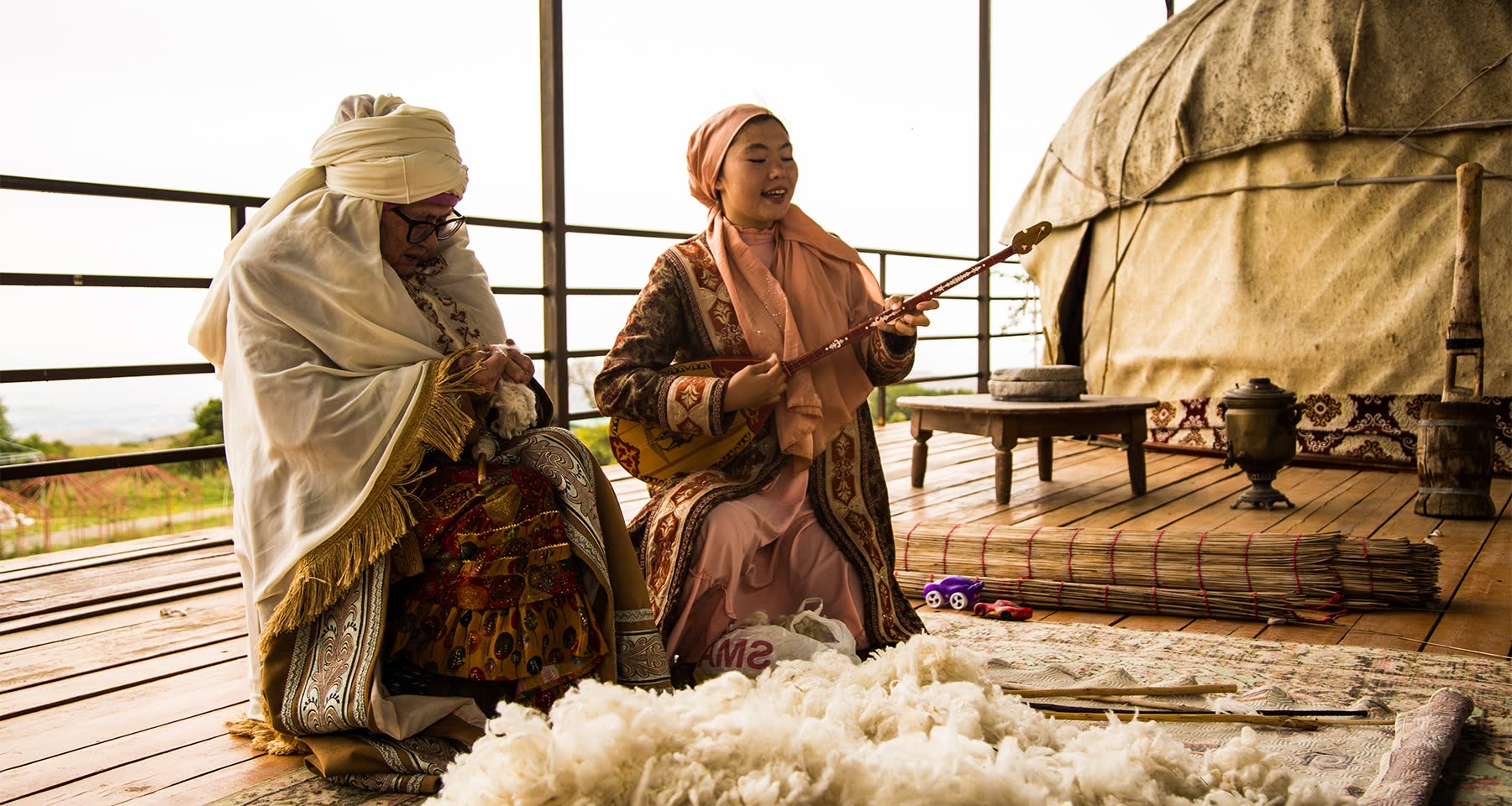The Culture of Kazakh
🐎The Culture of Kazakh People
🏕️Nomadic Heritage
Kazakh culture is deeply rooted in a nomadic lifestyle that developed over centuries on the vast steppes of Central Asia. Traditionally, Kazakhs moved with their livestock—horses, sheep, and camels—living in portable felt tents known as yurts. These yurts remain a strong cultural symbol and are still used in rural areas today.
🧂Hospitality and Social Values
Hospitality (qonaqzhailyq) is a core value in Kazakh society. Guests are honored and generously welcomed with food, drink, and kindness. Traditional etiquette includes serving baursak (fried dough), kumis (fermented mare’s milk), and besbarmak, the national dish of boiled meat and noodles, eaten with the hands.
Family and community ties are highly valued, with a strong emphasis on respect for elders and maintaining harmonious relationships.
🎶Music and Performing Arts
Kazakh traditional music features instruments like the dombra (a long-necked lute) and the kobyz (a bowed string instrument). Epic oral storytelling, known as aitys, combines poetry and musical improvisation. Kuy (instrumental compositions) are often performed solo on the dombra and convey stories without lyrics.
👘Traditional Clothing
Kazakhs traditionally wear garments suited for the harsh climate. Men wore chapan (coats) and malakhai (fur hats), while women’s attire included embroidered dresses and ornate headdresses like the saukele (a tall bridal hat). These garments are still worn during festivals and weddings.
🏇National Sports
Horse riding remains a vital part of Kazakh identity. Popular traditional sports include:
Kokpar – a fast-paced game similar to polo, played with a goat carcass.
Kyz Kuu – a horseback “courtship chase” between a man and a woman.
Togyzkumalak – an ancient board game known as the “chess of the steppes.”
📿Religion and Beliefs
The majority of Kazakhs are Sunni Muslims, though pre-Islamic beliefs such as Tengrism—a nature-based spirituality focused on sky, earth, and ancestor worship—continue to influence rituals and folk customs.
🥳Festivals and Celebrations
Nauryz (March 21–23) – Celebrates the spring equinox with traditional foods, music, sports, and family gatherings.
Weddings and Birth Ceremonies – Full of symbolism, with customs like Tusau kesu (cutting a toddler’s walking ropes) and Betashar (bride unveiling).
The culture of Kazakhstan is rich and diverse, influenced by the country's nomadic heritage, as well as the various ethnic groups that have lived in the region.
Here are some key aspects of Kazakh culture:

Nomadic Heritage: Kazakhstan has a long history of nomadic culture, and this heritage continues to influence many aspects of Kazakh life. The traditional yurt, a portable dwelling, is a symbol of nomadic culture and is still used for various purposes.
Language: The official language of Kazakhstan is Kazakh, a Turkic language. Russian is also widely spoken, and many Kazakhs are bilingual.
Music and Dance: Traditional Kazakh music features instruments like the dombra (a string instrument) and kobyz (a two-stringed violin). Kazakh folk songs often celebrate the beauty of the steppe. Traditional dances, such as the "Kara Zhorga" and the "Beshbarmak," are an integral part of Kazakh culture.
Horse Culture: Horses have been central to Kazakh nomadic life for centuries. Horseback riding and equestrian sports, such as kokpar (a form of horse polo), are popular. The Kazakh tradition of horse meat dishes, like "beshbarmak," remains a significant part of the cuisine.
Hospitality: Kazakh culture places a high value on hospitality. Guests are often greeted with great warmth and offered food and drink. It is customary to bring small gifts when visiting someone's home.
Cuisine: Traditional Kazakh cuisine features dishes made from livestock, such as lamb, beef, and horse meat. Beshbarmak, a dish made with boiled meat and noodles, is a national favorite. Milk products like kumis (fermented mare's milk) and shubat (fermented camel's milk) are also consumed.
Festivals: The country celebrates various cultural festivals, including Nauryz Meyrami, the Kazakh New Year, and Kurban Ait, a holiday marking the end of Ramadan. These festivals feature traditional games, music, dance, and feasts.
Art and Craftsmanship: Traditional Kazakh art includes intricate embroidery, carpet weaving, and felt-making. These crafts are used to decorate yurts and clothing.
Religion: Islam is the predominant religion in Kazakhstan, with the majority of the population being Sunni Muslims. There are also minority communities of Christians, Buddhists, and followers of other religions.
Modernization: As Kazakhstan has developed rapidly in recent decades, it has embraced modernity while preserving its cultural heritage. Urban areas like Almaty and Astana are vibrant and cosmopolitan, with a blend of modern architecture and traditional influences.
Kazakhstan's culture is a unique blend of its nomadic past, Islamic traditions, and modern influences. It reflects the country's diverse history and the resilience of its people in preserving their cultural identity while embracing the opportunities of the present.